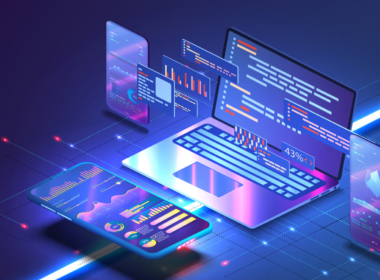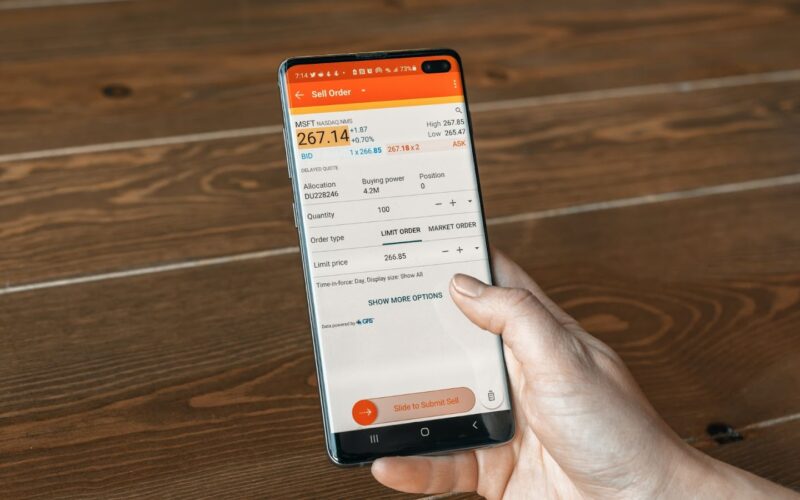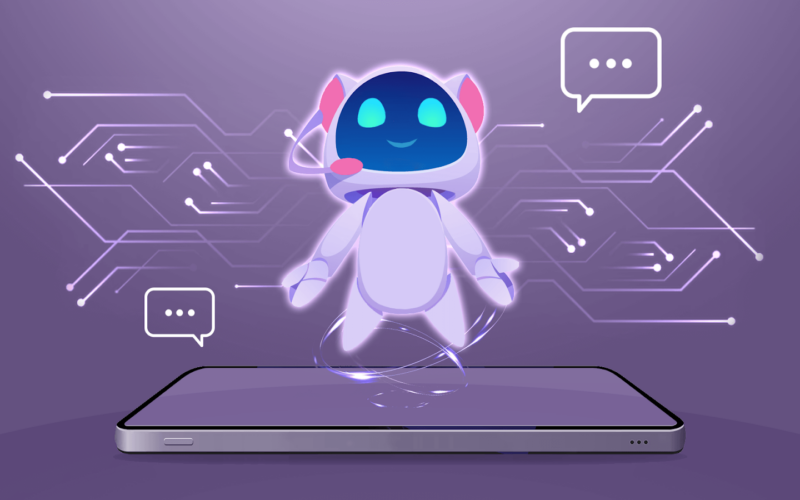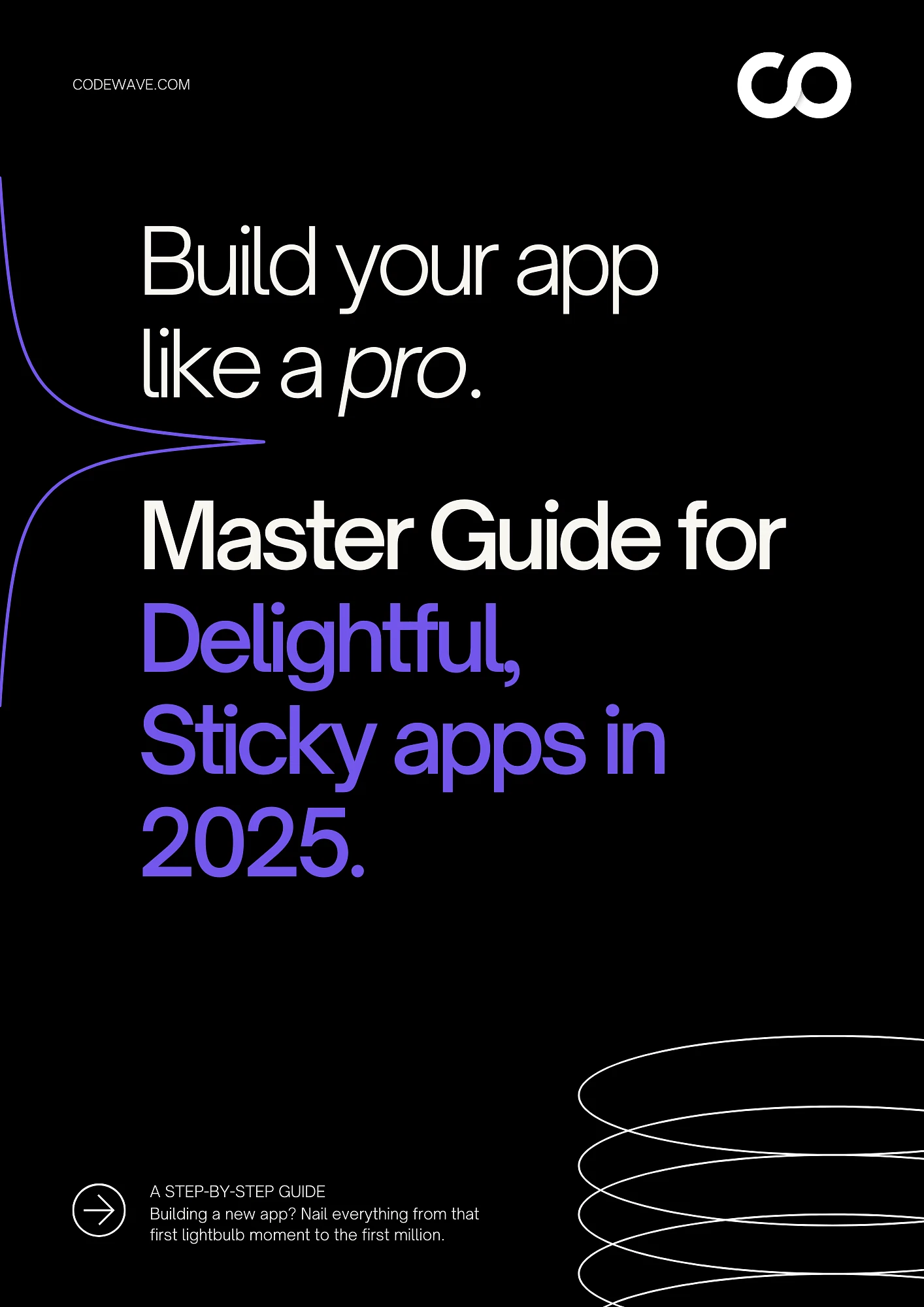As consumer expectations continue to evolve, retail apps must go beyond basic functionality to truly engage and retain users. For instance, a key feature of modern retail apps is real-time inventory and geo-based stock visibility, enabling customers to instantly check product availability at nearby stores and avoid the frustration of out-of-stock items.
Shoppers today demand personalized, seamless experiences that anticipate their needs. By 2025, mobile commerce is expected to account for 72.9% of all e-commerce sales globally, highlighting the importance of getting it right.
This blog delves into the key trends shaping retail app development, discusses the costs involved, and identifies the essential features that will drive success in 2025.
Key Takeaways
- Retail app development is essential for staying competitive in 2025, driven by customer expectations for seamless, mobile-first experiences.
- Key trends include AI-driven personalization, augmented reality (AR), and omnichannel integration.
- Essential features for success: user-friendly UI/UX, secure authentication, real-time inventory, and multiple payment options.
- Building a successful retail app involves understanding costs: ranging from $20,000 for basic apps to $100,000+ for feature-rich solutions.
- Custom development may have higher initial costs but offers long-term scalability, security, and competitive advantage.
Key Trends in Retail App Development for 2025
In 2025, successful retail apps will be driven by innovations that optimize user experiences, enhance backend scalability, and integrate real-time data with advanced analytics.
Retailers will need to use cloud-native architectures, microservices, and API-first design principles to enable flexibility and scalability.
With the rise of edge computing, apps will also improve performance by processing data closer to the user, reducing latency and enhancing responsiveness.
1. Tech Innovations: The Future of Retail Apps
Technologies like AI, AR, and IoT are revolutionizing the retail experience. These innovations enhance the way consumers interact with products, making shopping more immersive, efficient, and personalized.
Top Trends:
- AI: Powers personalized recommendations, predictive inventory management, and dynamic pricing.
- AR: Enables virtual try-ons and product visualization, creating an immersive shopping experience.
- IoT: Enhances the in-store experience through the integration of smart devices that track inventory and provide seamless customer service.
Example: IKEA’s use of AR to help customers visualize furniture in their homes before purchasing has enhanced the buying experience and reduced return rates.
2. Personalization at Scale: Enhancing Customer Engagement
Hyper-targeted experiences are becoming the norm. Retail apps are increasingly relying on AI to deliver personalized content, recommendations, and promotions at scale, significantly improving customer engagement.
Key Insights:
- AI-Driven Recommendations: Retailers use customer data to suggest relevant products and content based on past purchases and browsing behavior.
- Dynamic Discounts: Personalized discounts and promotions create a sense of exclusivity and urgency, boosting sales and customer loyalty.
Example: Amazon’s recommendation engine drives a significant portion of their sales by offering tailored suggestions, increasing both conversion and customer satisfaction.
3. Omnichannel Integration: Bridging Online and Offline Experiences
As the lines between in-store and online shopping continue to blur, omnichannel integration ensures a seamless experience for customers across all touchpoints. This is essential for building brand loyalty and enhancing customer satisfaction.
Key Insights:
- Click-and-Collect: Customers can order online and pick up in-store, bridging the gap between digital and physical retail.
- Real-Time Inventory Visibility: Customers can check product availability at nearby stores and reserve products for in-store pickup.
- Unified Customer Data: Combining customer data from both online and offline channels to create a consistent shopping experience.
Example: Retailers like Walmart and Target have successfully implemented click-and-collect services, enabling customers to shop online and pick up in-store, streamlining the shopping experience.
4. Mobile-First Shopping: The Shift to Mobile Apps
With mobile apps becoming the primary touchpoint for consumers, businesses must prioritize mobile-first design to meet the growing demand for on-the-go shopping experiences. By 2025, 70% of all e-commerce traffic will come from mobile devices
Key Trends:
- App-Only Offers: Many retailers are offering exclusive promotions and discounts through their apps to drive app downloads and customer engagement.
- Mobile Payments: Integration of mobile payment systems like Apple Pay, Google Wallet, and other digital wallets is enhancing convenience for users.
5. Sustainability and Ethical Consumption: Eco-Conscious Retail Apps
As consumers become more environmentally conscious, retail apps are incorporating features that promote sustainable and ethical consumption.
These apps are increasingly providing transparency about sourcing, carbon footprints, and other sustainability factors.
Key Trends:
- Carbon Footprint Tracking: Retail apps can now show the carbon footprint of products, allowing users to make more eco-friendly choices.
- Ethical Sourcing: Apps are providing detailed information on the ethical sourcing of materials and fair trade practices.
- Sustainability Ratings: Retailers can display sustainability ratings for products, encouraging customers to make responsible choices.
Example: Apps like Good On You provide customers with information on the ethical practices of clothing brands, helping them make more sustainable purchasing decisions.
Ready to bring your app idea to life faster and at a lower cost? At Codewave, we specialize in developing high-performance, scalable mobile apps tailored to your business needs. With our “Design-thinking” led approach, we ensure seamless user experiences, robust security, and rapid delivery.
Building a great retail app requires more than just trends. Let’s look into the key features that will make your app truly successful.
Top 10 Features Essential for a Successful Retail App Development
Developing a successful retail app requires more than just basic functionality. It demands a seamless, secure, and engaging user experience that drives conversions and customer loyalty.
Here are the top 10 features that are essential to building an impactful retail app in 2025:
1. User-Friendly UI & UX Design
A clean, intuitive user interface is key to ensuring that customers can navigate your app effortlessly. With a simple, well-structured design, users can quickly find what they need, making it easier for them to complete purchases.
Streamlining the checkout process by reducing the number of steps can significantly improve conversion rates and enhance customer satisfaction.
2. Secure User Authentication
Security is critical for retail apps, especially when handling sensitive data such as payment information. Implementing secure authentication methods like multi-factor authentication (MFA) and biometric logins (fingerprint or facial recognition) ensures that user data is protected while also offering a smooth login experience.
This builds trust with your users and prevents unauthorized access, ensuring a safe and seamless shopping experience.
Also Read: Understanding AI Security Risks and Threats
3. Personalized User Experience
Personalization drives engagement by delivering tailored recommendations based on browsing history, past purchases, and preferences.
With AI-powered features, you can offer targeted discounts, relevant product suggestions, and personalized notifications, which not only enhance the user experience but also increase the likelihood of repeat purchases.
By crafting a personalized shopping journey, you can significantly boost customer loyalty and lifetime value.
4. Secure Multiple Payment Options
Providing a variety of secure payment options is crucial for reducing cart abandonment rates. Offering different methods such as credit cards, mobile wallets, Buy Now Pay Later (BNPL), and contactless payments ensures that customers can choose the option most convenient for them.
By enabling a smooth and secure transaction process, you build trust and increase conversion rates.
5. Product Search & Smart Filtering
A robust and intelligent search function is essential for helping customers find the products they’re looking for quickly. Features like auto-suggestions, typo correction, and smart filters allow for a seamless search experience.
Additionally, incorporating voice search and image-based search options can further enhance product discovery, helping customers find products faster, which improves the overall shopping experience.
6. Real-Time Order Tracking
Offering real-time order tracking builds transparency and trust by allowing customers to monitor the progress of their deliveries. Integrating push notifications to update customers on shipment status and estimated arrival times provides a positive post-purchase experience.
This transparency not only reduces customer service queries but also strengthens brand reliability and increases customer satisfaction.
7. In-App Push Notifications
Push notifications are a powerful tool to re-engage users and drive conversions. By sending timely updates on sales, promotions, or personalized discounts, you can keep your customers engaged without being intrusive.
A smart notification strategy that analyzes user behavior ensures that the messages are relevant, leading to higher engagement and increased repeat visits to the app.
8. Social Media Sharing
Integrating social media sharing allows customers to easily share their purchases, wishlists, or special deals with their networks.
This feature helps amplify your brand’s reach organically, as satisfied customers promote your products on platforms like Instagram, Facebook, and WhatsApp.
Social sharing encourages user interaction and serves as a form of free marketing, expanding your brand’s visibility and boosting customer engagement.
9. Multi-Device & Cross-Platform Support
Ensuring that your retail app works seamlessly across different devices is crucial for providing a consistent and accessible experience. Whether the customer is using an iOS device, Android, or web platform, syncing user data like shopping carts, preferences, and wishlists ensures they can pick up where they left off.
A cross-platform app that offers uniform functionality enhances the overall customer experience and increases user retention.
10. Loyalty Programs & Rewards Integration
Loyalty programs are an effective way to retain customers and encourage repeat purchases. By integrating reward points, exclusive deals, or referral bonuses into your retail app, you can incentivize users to continue engaging with your brand.
This feature not only increases customer retention but also fosters a sense of community, helping to turn first-time buyers into loyal, long-term customers.
Also Read: AI Trends in the Future of Mobile App Development
What Are the Key Technologies Used in Retail App Development?
To build a successful retail app in 2025, integrating cutting-edge technologies is crucial. Here’s a breakdown of the key technologies that will shape the future of retail apps:
- Artificial Intelligence (AI) and Machine Learning (ML): Enhances personalized shopping experiences, product recommendations, and AI-driven customer support.
- Augmented Reality (AR): Allows virtual try-ons and product visualization, boosting customer confidence and reducing returns.
- Internet of Things (IoT): Enables real-time product tracking, smart inventory management, and location-based services.
- Cloud Computing: Ensures scalability, real-time syncing, and storage, allowing retail apps to handle fluctuating traffic efficiently.
- Blockchain Technology: Enhances security, transparency in transactions, and ensures product authenticity through secure supply chain tracking.
- Chatbots and Virtual Assistants: AI-powered tools for customer support, product recommendations, and guiding users through purchases.
- Payment Gateway Integrations: Secure, flexible payment solutions like Stripe, PayPal, and Apple Pay for seamless transactions.
- Geolocation and GPS: Powers location-based services such as nearby store searches, real-time offers, and delivery tracking.
- Push Notifications: Engage users with timely updates on sales, deals, order statuses, and personalized offers.
- Voice Search: Enables hands-free interaction with retail apps, allowing users to search for products or place orders via voice commands.
Looking to improve your customer experience and boost retention? Codewave specializes in crafting customer journeys that engage and delight at every touchpoint. Our design thinking process focuses on emotional design and real business impact. Let’s build experiences that drive loyalty and maximize value for your business.
Furthermore, building a retail app in 2025 involves various stages and considerations that influence the overall cost. Here’s a detailed breakdown to help you understand the investment required.
How Much Does It Cost to Build a Retail App in 2025?
As the retail industry continues to evolve, the demand for seamless, user-friendly, and feature-rich retail apps is higher than ever. However, building an app that meets these expectations requires careful planning, a solid understanding of the development process, and the right set of tools and technologies.
From AI-driven features and real-time inventory updates to intuitive payment gateways, each element impacts the overall cost.
1. Understanding the Cost Breakdown
Developing a retail app encompasses several key stages:
- Discovery: Involves market research, requirement gathering, and feasibility analysis.
- Design: Focuses on UI/UX design, wireframing, and prototyping.
- Development: Includes front-end and back-end development, database integration, and API connections.
- Testing: Covers quality assurance, bug fixing, and performance optimization.
- Maintenance: Encompasses updates, security patches, and feature enhancements post-launch.
Technologies integrated into these stages may include Augmented Reality (AR) for virtual product try-ons, Artificial Intelligence (AI) for personalized recommendations, and secure payment gateways for transactions.
2. Factors Affecting the Cost
Several elements can influence the cost of developing a retail app:
- Complexity of Features: Advanced functionalities like AI-driven personalization or AR features can increase development time and costs.
- Design Requirements: Custom, high-quality designs require more resources than standard templates.
- Integration with Other Platforms: Connecting with existing systems like POS, CRM, or ERP can add to the complexity and cost.
3. Cost Estimates
Based on industry standards, the estimated costs for developing a retail app in 2025 are:
- Basic App: $20,000 – $50,000
- Feature-Rich App: $100,000+
- Ongoing Maintenance and Updates: 15–20% of the initial development cost annually
These estimates can vary depending on the project’s scope, complexity, and the development team’s location.
4. Why Custom Development May Cost More but Pay Off
Opting for custom development may require a higher initial investment but offers several long-term benefits:
- Tailored Solutions: Custom apps are designed to meet your specific business needs, leading to better user satisfaction.
- Scalability: Custom-built apps can grow with your business, accommodating future features and integrations.
- Competitive Advantage: Unique features can set your app apart from competitors, attracting more users.
While the upfront cost is higher, the return on investment can be significant, making custom development a worthwhile consideration for businesses aiming for long-term success.
Also Read: Top 10 AI Applications Across Major Industries
Selecting the right development partner is crucial. Let’s explore what to look for when choosing the best team to bring your retail app to life.
How to Choose the Right Development Partner for Your Retail App
Selecting the right development partner is crucial to the success of your retail app. A reliable partner ensures your app’s technical foundation is solid, supports your business goals, and meets customer expectations.
Retail apps require expertise in key areas like mobile commerce, user experience (UX/UI), integration capabilities, and long-term scalability.
The right partner will not only deliver on these fronts but also guide you through every phase, from initial planning to post-launch support.
| Criteria | What to Look For |
| Expertise in Retail Apps | Proven experience in building retail apps with secure payment systems, AR, or personalized recommendations. |
| Technical Skills | Expertise in modern frameworks like React Native or Flutter, backend technologies, and integration with CRM, ERP, and payment gateways. |
| Communication & Collaboration | Clear and continuous communication channels, collaboration tools, and project management methods. |
| Post-Launch Support | Comprehensive maintenance and support services, bug fixes, updates, and performance monitoring. |
| Tech Stack Knowledge | Knowledge of tech stacks suited for retail apps like React Native, Flutter, or Swift for iOS and Android. |
Also Read: Hiring Offshore Flutter App Developers: A Guide
Case Study: Codewave’s Innovative Solution for Retail App Development
Meolaa, a sustainable fashion platform, sought a unique way to engage users and showcase its eco-friendly products. The goal was to create a visually captivating landing page with innovative navigation that would encourage product discovery and keep users engaged.
Challenge
Meolaa needed a standout feature that would captivate its target Gen Z audience. The challenge was to move beyond traditional scrolling and introduce an entirely new navigation experience, making the platform fun, interactive, and intuitive.
Codewave’s Solution
Codewave developed a dynamic infinity landing page that allows users to scroll in all directions—up, down, left, and right.
This interactive navigation system enhanced product discovery while providing a seamless and engaging browsing experience that resonated with Meolaa’s audience.
Impact
The infinity landing page significantly boosted user engagement, increasing time spent exploring products and driving higher interaction rates.
Meolaa’s unique, interactive experience captured attention and encouraged repeat visits, solidifying its position as a forward-thinking, sustainable fashion platform.
Explore more innovative solutions in our portfolio and discover how we can help your business thrive digitally.
Conclusion
As mobile commerce continues to dominate, delivering seamless, innovative experiences will be key to staying competitive.
By integrating advanced features like real-time inventory updates, AI-driven personalization, and omnichannel support, businesses can significantly enhance customer engagement and drive long-term growth.
However, building an app that truly stands out requires a strategic approach, a deep understanding of user behavior, and a focus on delivering value at every step of the customer journey.
Why Choose Codewave?
At Codewave, we specialize in building custom retail apps that combine stunning design with robust functionality. Our expertise in UX/UI design, interactive navigation, and scalable web and mobile app development ensures your retail platform stands out from the crowd.
- User-Centered Design: We focus on creating intuitive experiences that drive engagement and customer loyalty.
- Scalable Solutions: Our custom-built apps are designed to grow with your business, ensuring they stay flexible as your needs evolve.
- Rapid, Reliable Delivery: We offer quick turnaround times without compromising quality, using our proven methodologies.
- Cross-Platform Expertise: Whether iOS, Android, or web, we develop solutions that work seamlessly across platforms and devices.
- Seamless Integration: We ensure your retail app integrates smoothly with your existing systems, including CRM, ERP, and payment gateways.
Ready to build your next successful retail app? Let’s turn your vision into a reality.
FAQs
Q: How do AI-powered features improve retail apps?
A: AI-driven features, like personalized recommendations and dynamic pricing, enhance the customer experience by tailoring content and promotions. This leads to increased engagement and higher conversion rates, improving overall sales and customer satisfaction.
Q: Why is omnichannel integration essential for retail apps?
A: Omnichannel integration connects online and offline shopping experiences, allowing customers to check product availability in-store, access their shopping cart across platforms, and enjoy consistent experiences, boosting loyalty and satisfaction.
Q: What are the long-term benefits of custom retail app development?
A: Custom development allows businesses to create solutions tailored to their specific needs. Over time, this offers scalability, flexibility, and integration with existing systems, reducing long-term maintenance costs and ensuring future-proof solutions.
Q: How do mobile payment options impact retail app success?
A: Offering diverse payment options like mobile wallets, BNPL, and contactless payments streamlines the checkout process, reduces cart abandonment rates, and provides customers with convenience, increasing conversion and customer loyalty.
Q: How does sustainability play a role in retail app development?
A: As consumers become more environmentally conscious, retail apps that showcase product sustainability, track carbon footprints, and promote ethical sourcing resonate with shoppers. These features help build trust and encourage responsible consumer behavior.
Codewave is a UX first design thinking & digital transformation services company, designing & engineering innovative mobile apps, cloud, & edge solutions.







